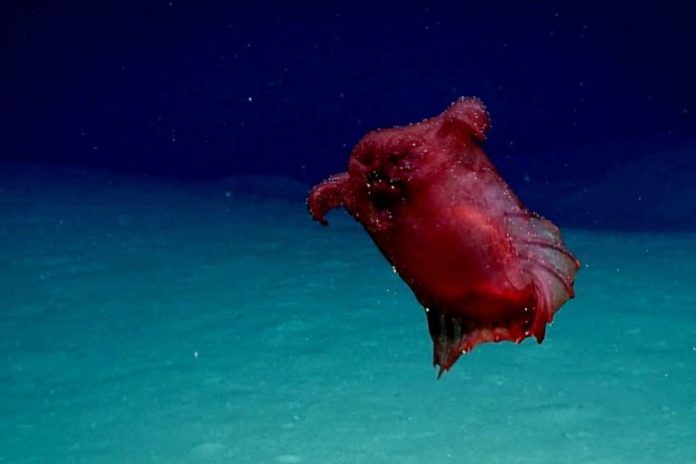‘Headless chicken monster’ filmed near Antarctica for the first time.
The deep oceans off the coast of Antarctica have served up their fair share of terrifying creatures.
You’ve seen the backwards-walking spider crustaceans, you’ve seen the faceless fish and the super-questionable peanut worm.
Now gaze on the “headless chicken monster” and despair.
For the first time, scientists in the Australian Antarctic Division have caught the rare marine creature on camera, posting a video to YouTube on Sunday, in the Southern Ocean off the coast of East Antarctica. The swimming sea cucumber, known more formally as enypniastes eximia, has been filmed only once before in the Gulf of Mexico.
The “headless chicken monster” name is no overstatement. The scarlet-coloured sea cucumber has wing-like webbing on its sides that it uses to swim, and where you might expect a head, there’s nothing but a circular ring of tentacles that gives the impression it’s just met with the chopping block.
The creature was captured on an underwater camera designed by the Australian Antarctic Division to attach to commercial fishing equipment used in the Southern Ocean. The camera attaches to longlines and can go to depths of up to 3 kilometres, thanks to its “extremely durable” casing.
“We needed something that could be thrown from the side of a boat, and would continue operating reliably under extreme pressure in the pitch black for long periods of time,” said Australian Antarctic Division program leader Dr. Dirk Welsford.
“Some of the footage we are getting back from the cameras is breathtaking, including species we have never seen in this part of the world.”
As well as showing us rare species and never-before-seen parts of the ocean floor, the footage is also being used to help improve marine conservation and commercial fishing operations.
“It’s a really simple and practical solution which is directly contributing to improving sustainable fishing practices,” Welsford said.
“The cameras are providing important information about areas of sea floor that can withstand this type of fishing, and sensitive areas that should be avoided.”








